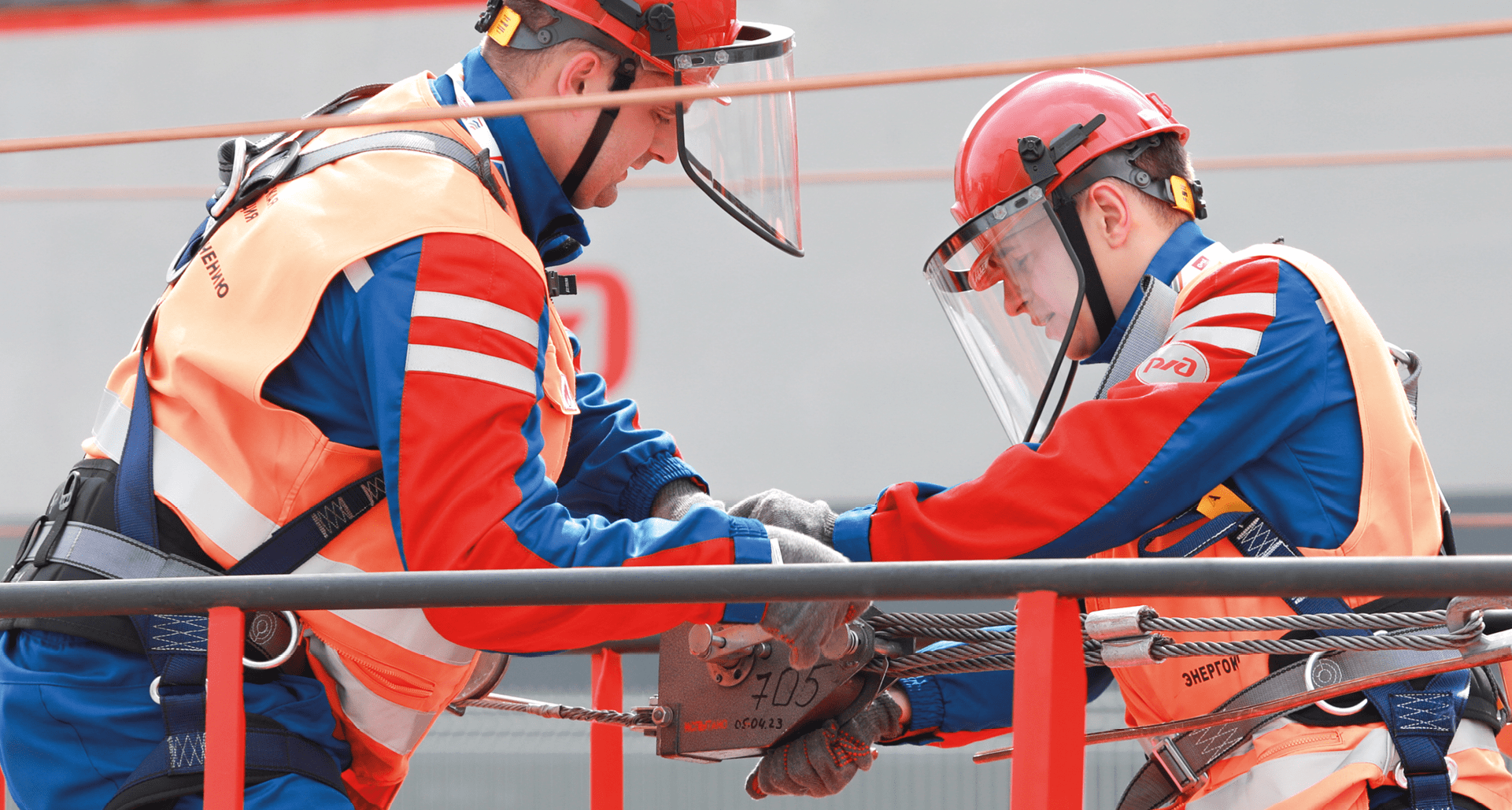Health and safety management system
The health and safety management system is part of the governance framework and helps ensure a comprehensive approach and a single health and safety procedure across all Company levels. Russian Railways manages health and safety at four levels: corporate, central, regional, and linear. Health and safety matters are within the remit of the Environment and Technosphere Safety Department, while at railways, these are the responsibilities of occupational health and safety functions.
The health and safety management system is based on a risk-oriented approach that provides for a shift from reactive (i.e. damage compensation) to proactive measures by minimising employee exposure to production risks, and harmful and hazardous factors.
The Safety Culture Policy of the Russian Railways GroupRussian Railways’ Order No. 219/r dated 3 February 2022 sets it as a development goal to nurture responsibility of the Company and all its employees towards communities, individuals, and professional duties. The Company has a dedicated Regulation on Safety Culture LeadersRussian Railways’ Order No. 2404/r dated 22 September 2023., which sets out the guidelines for cross-functional interaction and knowledge sharing among members of the Safety Culture Leaders’ Community through the existing corporate platforms.
Today, safety culture is embedded in the activities of each and every department involved in ensuring safety, regardless of the role served (traffic and fire safety, occupational health and safety, environmental, transport, economic, and information security). By their actions, our managers demonstrate their commitment to safety culture and take personal responsibility for safety.
The concept of safety culture approved by Russian Railways’ Management Board was used to define the labour safety culture, which for our employees means being aware of the importance of occupational safety, taking responsibility for it, and being able to ensure occupational safety as a core value for the Company and each employee.
The concept of occupational safety culture covers the following areas:
- for managers – leadership, risk assessment, priority of health and safety over production issues;
- for employees – competence, involvement and responsibility;
- for equipment, tools, and technologies – availability, serviceability, and safety.
Corporate governance and culture are primarily aimed at improving employee loyalty. Employee loyalty means that employees share our values and vision, which helps them participate actively in the working process and strive to achieve common goals.
Policies and procedures
The health and safety management system is aligned with the Company’s Health, Environmental and Industrial Safety Policy approved by the Management Board of Russian Railways, and prioritises the lives and health of employees.
Each year, the Company develops a list of updated internal regulations on health, industrial, and fire safety and non-occupational injuries.
In the reporting year, Russian Railways had more than 240 internal regulations and guidelines on health and safety. In 2024, 37 internal regulations on health and safety (standards, rules, instructions, and other regulations and organisational and methodological documents) were drafted or updated. The following documents took effect:
- Regulation on organisation of incident investigation in Russian Railways operations;
- Methodology of investigation, recording and assessment of microdamage (microinjuries) sustained by Russian Railways’ employees in the working process;
- Methodology for analysing and assessing occupational risks of Russian Railways’ employees.
Analysis and assessment of occupational risks
GRI 403-2In 2024, Russian Railways enhanced its health and safety management system through updating regulations and introducing new approaches to occupational risk assessment. These efforts focused on increasing safety of workplaces, adapting assessment methods to actual working conditions and developing efficient measures to mitigate risks for employees.
In the reporting year, Russian Railways updated:
- industry standard 15.014 -2024 Health and Safety Management System. Occupational Risk Management. General ProvisionsRussian Railways’ Order No. 3191/r dated 19 December 2024.;
- Methodology for analysing and assessing occupational risks of Russian Railways’employeesRussian Railways’ Order No. 2249/r dated 16 September 2024. (The Methodology).
The regulations were updated to introduce a new approach to calculating the levels of occupational risks at workplaces. The standard sets forth key elements, methods, stages and procedure of Russian Railways’ health and safety management system. We enhanced the Methodology with a new algorithm for assessing occupational risks, including collecting primary data for assessing operating environment factors and creating a list of workplaces.
The Methodology enabled transition from occupational risk management by jobs to workplace risk management, which accounts for local specifics of labour conditions.
The structural units of the Company’s branches used the Occupational Risk Analysis and Assessment for Russian Railways’ Employees automated system to assess risks by key groups of hazardous jobs. They carried out a comprehensive assessments, established acceptable levels of occupational risks, and developed lists of unacceptable and undesirable risks. Following assessments, the regional structural units did the risk ranking and mapping for main hazardous jobs. We also made occupational risk projections.
The most hazardous jobs are:
- track serviceman;
- lineworker;
- electrical mechanic;
- track foreman;
- track supervisor;
- shunting master;
- cargo and luggage acceptance/delivery inspector;
- crossing keeper;
- car inspector-repairman;
- locomotive, railway construction machinery driver and assistant driver;
- rolling stock repairman;
- motor car driver.
Based on the assessment, our structural units developed activities to manage occupational risks as part of the Health and Safety Improvement Programme for 2025.

